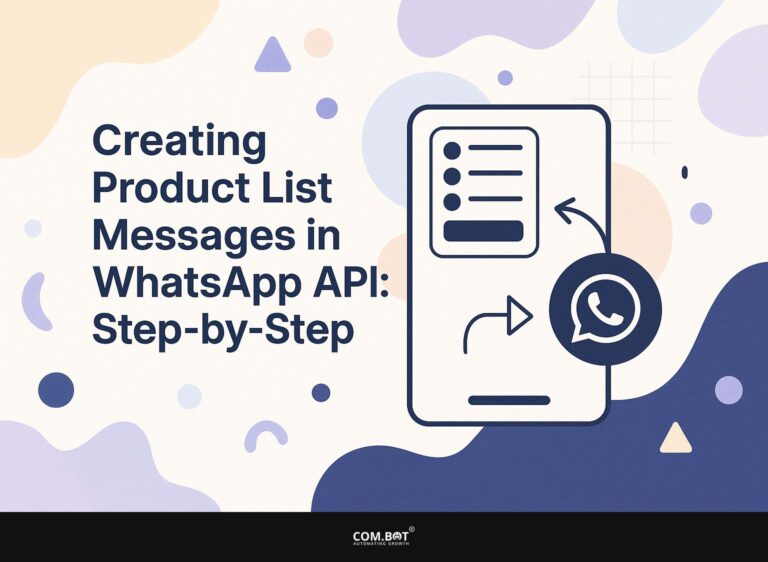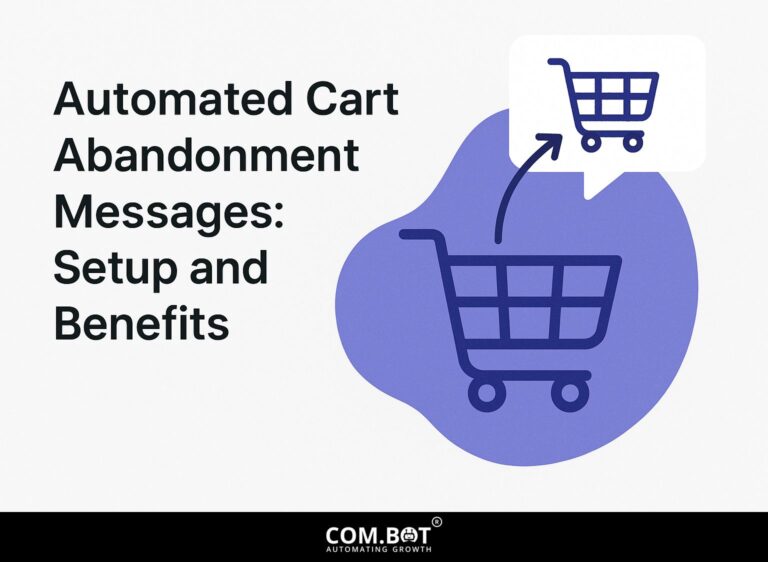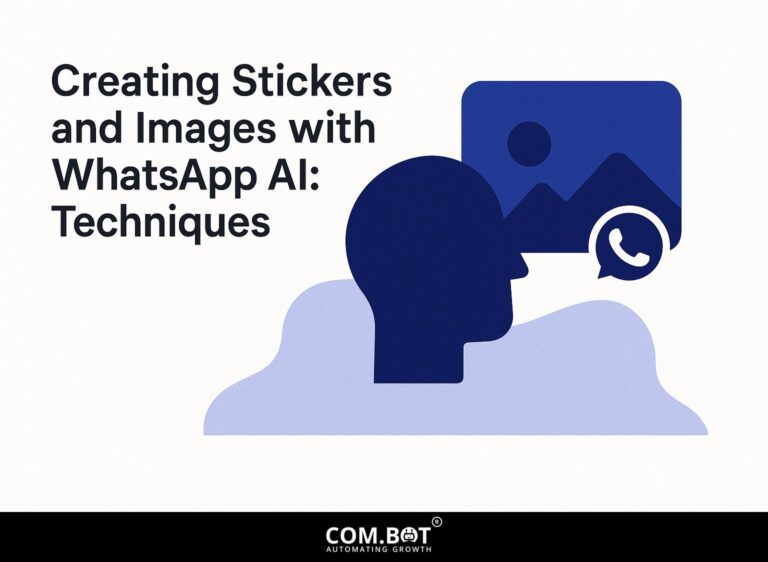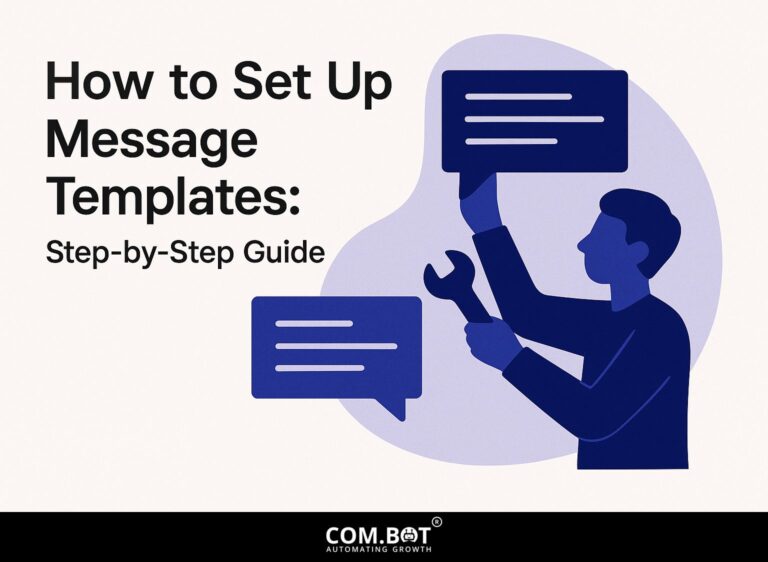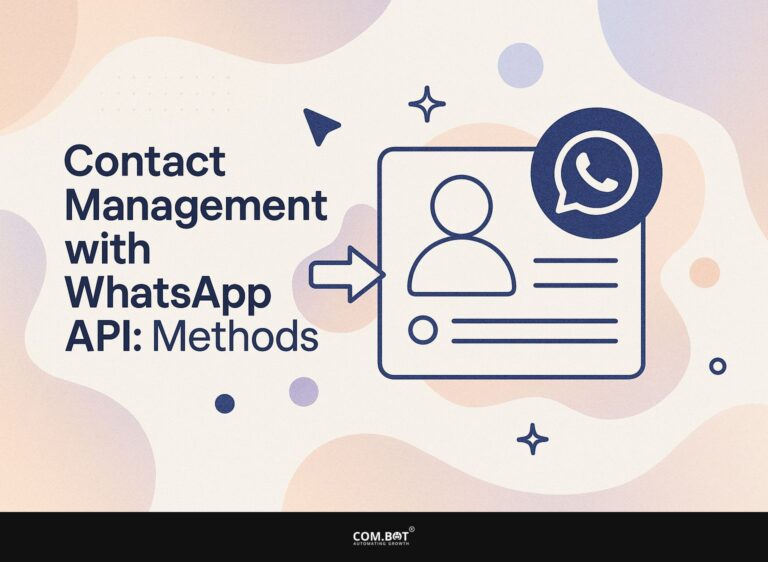WhatsApp API: Sending Media Messages and Best Practices
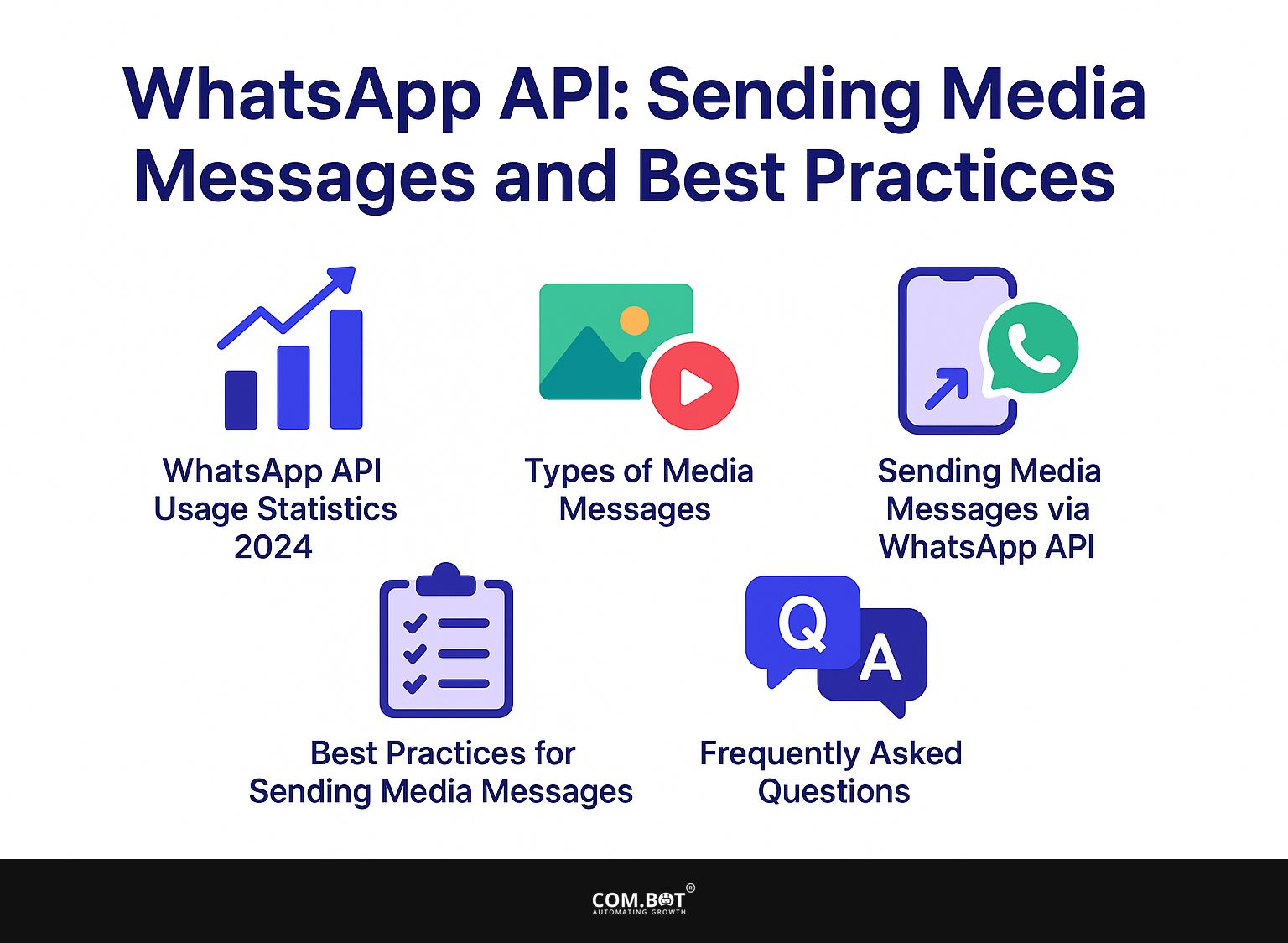
Make the most out of the WhatsApp API for your business with effective media messaging! Whether you’re working with the WhatsApp Business API through platforms like Twilio or Latenode, learning the REST API and webhooks for sending images, videos, and more can improve how you interact with customers.
In this article, we will look at key strategies and effective methods for using media messages, making sure you get the most out of your communications on WhatsApp.
Key Takeaways:
- Media messages are a powerful tool for businesses to engage with their customers on WhatsApp.
- When sending media messages via WhatsApp API, it is important to consider file size and format, as well as the timing and frequency of messages.
- As media messaging on WhatsApp changes, it’s important to keep up with best practices and use the usual API endpoints to communicate well with customers.
- 1 WhatsApp API Usage Statistics 2024
- 2 WhatsApp API Usage Statistics 2024
- 3 Types of Media Messages
- 4 Sending Media Messages via WhatsApp API
- 5 Best Practices for Sending Media Messages
- 6 Frequently Asked Questions
- 6.1 1. What is the WhatsApp API and how can it be used for sending media messages?
- 6.2 2. What are the best practices for using the WhatsApp API to send media messages?
- 6.3 3. Can I send any type of media file through the WhatsApp API?
- 6.4 4. Is there a limit on the size of media files that can be sent through the WhatsApp API?
- 6.5 5. Are there any restrictions on the content of media messages sent through the WhatsApp API?
- 6.6 6. Can I schedule media messages to be sent through the WhatsApp API?
Overview of WhatsApp Business API
The WhatsApp Business API allows for secure messaging, requiring a verified business and a developer account for integration. Once set up, businesses can send customer notifications and support messages effectively.
Integration can be achieved using webhooks for real-time updates, allowing for timely responses to inquiries. For those interested in further optimizing their system, our WhatsApp API Integration Guide covers AI, CRM, and automation techniques.
To use this API for notifications, set up message templates easily to send automatic updates about order statuses or promotions.
Using chatbots can simplify the first contact with customers by answering common questions and connecting them to human staff when necessary. This method improves customer interaction and makes response times faster.
WhatsApp API Usage Statistics 2024
WhatsApp API Usage Statistics 2024
Exploring the numerous opportunities offered by WhatsApp in various sectors can be pivotal for businesses seeking to enhance communication and operational efficiency. As industries continue to adapt to digital transformations, the integration of AI technology within WhatsApp platforms is becoming increasingly crucial. Related insight: How to Use AI WhatsApp Bots? Best Practices for US Businesses
WhatsApp Business and API Statistics: Global Usage
WhatsApp Business and API Statistics: Message Metrics
WhatsApp Business and API Statistics: User Demographics
WhatsApp Business and API Statistics: Business Engagement
The WhatsApp API Usage Statistics 2024 offers a detailed look at how WhatsApp and its API are used worldwide, especially in business situations. This data shows how wide the platform’s audience is, how people interact with it, and information about the users, emphasizing its role as a tool for communication and marketing.
Global Usage statistics reveal that WhatsApp boasts a massive user base of 3 billion globally, with 200 million utilizing WhatsApp Business. This shows more businesses are using WhatsApp to talk to customers and manage tasks. WhatsApp’s availability in 180 countries underscores its global penetration. A remarkable 52.5% conversion rate via WhatsApp shows how well it can influence customers to take action, making it a strong method for online shopping and getting customers involved.
Message Metrics show that WhatsApp facilitates 140 billion daily messages, reflecting its role as a primary communication tool. The platform’s 98% message open rate is significantly higher than traditional email, highlighting its utility for timely and effective customer communication.
User Demographics give information about the platform’s users With 53.9% male and 46.1% female users, WhatsApp is almost evenly split between genders. The 26-35 age group represents 27% of users This shows that young adults frequently use it. Businesses often focus on this group for products and services related to technology.
Business Engagement reveals strategic uses of WhatsApp by companies. 46.7% of brands using the platform for influencer campaigns demonstrate its role in modern marketing strategies. Additionally, 83% of users engaging with catalogues show the platform’s ability to support e-commerce activities effectively.
In summary, these statistics illustrate WhatsApp’s vast potential in personal and business communications. With high user engagement, effective message delivery, and increasing business integration, WhatsApp continues to be an indispensable part of digital communication and marketing strategies worldwide.
Importance of Media Messages
Media messages are very important for communication. They make people interact more, increasing engagement by up to 80% compared to messages that only have text.
Using multimedia like images, videos, and interactive documents can greatly improve customer interactions.
For instance, using a short video in your email campaigns can increase click-through rates by 200-300%. Tools like Canva for design and Loom for making videos help businesses create professional media content easily.
Platforms like Mailchimp allow embedding of these elements directly into emails. By varying your communication methods, you grab people’s attention and build stronger relationships, which leads to happier customers and better reply rates. See also: Com.bot Rich Media Messaging for integrating advanced media tools into your communication strategy.
Types of Media Messages
WhatsApp allows different media messages, each with specific roles to improve interaction with customers.
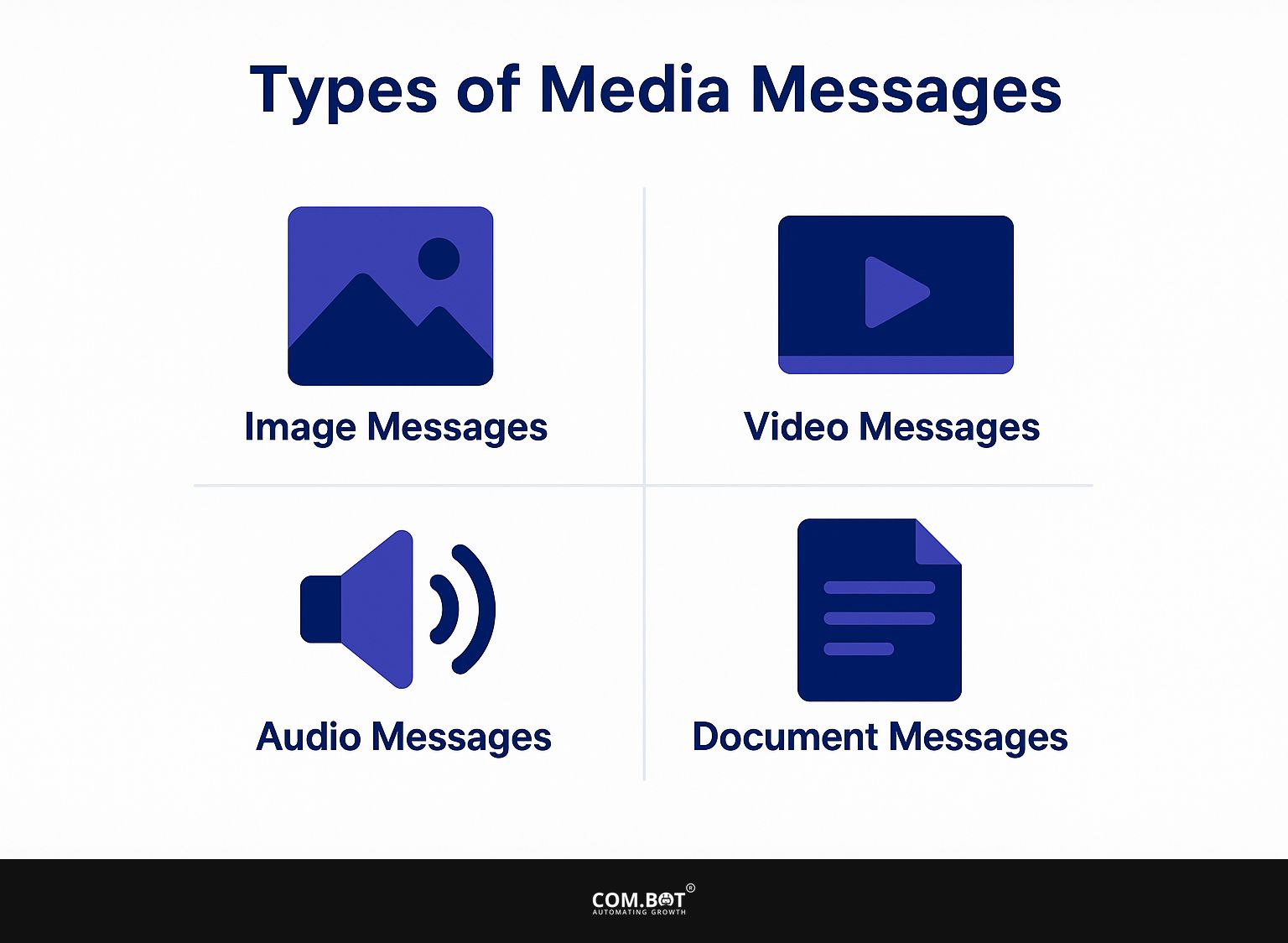
1. Image Messages
Businesses can send clear pictures with JPEG and PNG formats to make users engage more. These formats provide high-quality visuals and help pages load faster, keeping users on the site.
To send image messages quickly, keep file sizes below 5 MB. For example, use JPEG for product images due to its balance of quality and size, while PNG works well for graphics with transparent backgrounds.
Examples include showing new product launches or sharing visual graphics that emphasize key details, making your messages easier to understand and more interesting.
2. Video Messages
Video messages can be as large as 16 MB, giving businesses a lively method to share information and increase customer interaction. To send a video message, use formats like MP4 to make sure it works on most devices.
Begin by creating a brief, engaging video that highlights the key points to capture your audience’s interest. For example, real estate agents showcase properties, while customer service teams use this method to address common queries.
Tools like Loom and Vidyard provide features that make tasks like screen recording and creating personalized videos easier. Aim for a friendly tone and a clear call to action, inviting viewers to connect further or respond with feedback.
3. Audio Messages
Companies can send audio messages, giving a personal feel by letting customers listen to the voice of the brand, which strengthens relationships.
To send audio messages, make sure your files are no larger than 16 MB and are in.mp3 or.wav format. Choose a reliable platform like WhatsApp or Slack, where you can easily record or upload your messages.
For example, the voice note feature on WhatsApp lets you answer customer questions directly and provide specific help. This personal touch can significantly improve customer satisfaction, as clients feel more engaged.
Consider incorporating audio messages in email campaigns to explain complex issues succinctly, creating a richer customer experience.
4. Document Messages
Document messages enable businesses to share important files, such as PDFs and presentations, directly through WhatsApp, streamlining communication.
To send a document message, tap the attachment icon and select `Document.’ You can upload files up to 100 MB in formats like PDF, DOCX, and PPT. This feature is particularly useful for customer service scenarios, such as sending contracts for quick approval or brochures to inform customers about new products.
Simple and clear documents help keep people interested and limit repeated exchanges, leading to quicker replies and happier customers.
Sending Media Messages via WhatsApp API
Using the WhatsApp API to send media messages requires following certain steps and knowing the usual API endpoints. For more on how setting up the API can benefit your operations, explore our article on WhatsApp API Setup: Components and Benefits.
1. Step-by-Step Guide
To send media messages via the WhatsApp API, follow these steps:
- Set up your API key,
- Choose your media type,
- Format your JSON payload,
- Send using the POST method.
{ "recipient_type"individual "to"" }
Make sure that your media link is accessible publicly. A common pitfall is forgetting to validate the URL, which can lead to errors in transmission.
After obtaining your API key, you can send different types of media, including images, audio, and video. For instance, to send an image, your JSON payload should look like this:
{ "messaging_product"whatsapp "type"image "image": { "link"https://example.com/image.jpg" }, "recipient_type"individual "to"" }
Make sure that your media link is accessible publicly. A common pitfall is forgetting to validate the URL, which can lead to errors in transmission.
2. Common API Endpoints
Key API endpoints for sending media messages include /v1/messages for sending text and media, and /v1/media for uploading files. To fetch specific message details or check the status of sent media, use the /v1/messages/{id} endpoint.
For sending media, the /v1/media endpoint allows multipart/form-data to accommodate images or videos. Here is a JSON request example for uploading an image:
{ "file"path/to/image.jpg "type"image/jpeg" }This method allows easy handling of media files and makes sure messages are sent quickly.
Plus these essential endpoints, consider using /v1/messages/{id} to fetch specific message details or check the status of sent media. For sending media, the /v1/media endpoint allows multipart/form-data to accommodate images or videos.
Here’s an example JSON request for uploading an image:
{ "file"path/to/image.jpg "type"image/jpeg" }This method makes it simple to manage media and guarantees that messages are sent promptly.
Best Practices for Sending Media Messages
Following effective methods for sending media messages can greatly increase interaction and make customers happier. This approach aligns with the principles outlined in our analysis of campaign analytics features and optimization techniques.

1. File Size and Format Considerations
Knowing WhatsApp’s file size limits is important; images need to be less than 5 MB, and documents can go up to 100 MB.
Videos can only be up to 16 MB, so you need to compress them to share longer clips. To reduce file sizes without losing quality, use tools like HandBrake for videos and TinyPNG for images.
For documents, converting to PDF format may help keep the file within limits. Knowing these tools makes WhatsApp simple to use and helps prevent problems during uploads.
2. Timing and Frequency of Messages
Strategically timing media messages can significantly impact their effectiveness; studies show that messages sent between 9 AM and 12 PM yield higher open rates.
Sending messages on weekdays, particularly Tuesday and Thursday, often results in better engagement compared to weekends, where response rates drop.
Aim for a frequency of 2-3 messages per week to avoid overwhelming your audience; this keeps your brand top of mind while maintaining interest.
Tools like Mailchimp or Hootsuite can help analyze engagement data, allowing you to adjust timing and frequency for optimal performance. Watch your click-through rates to adjust upcoming campaigns and make them work better.
3. Future of Media Messaging on WhatsApp
New trends suggest that media messages on WhatsApp will improve with new features, such as AI chatbots, for improved customer communication.
- To take advantage of these improvements, businesses should start by using AI-based chatbots with tools like ManyChat or Chatfuel to make customer support more efficient.
- Next, think about using clear compliance guidelines, like updated privacy policies that match rules such as GDPR, to protect customer data.
- Show your team how to use WhatsApp’s new tools like message automation and interactive buttons to better connect with users.
- By applying technology and adhering to guidelines, you will improve customer satisfaction and strengthen your brand in the shifting online world.
Frequently Asked Questions
1. What is the WhatsApp API and how can it be used for sending media messages?
The WhatsApp API is an application programming interface that allows businesses to interact with their customers on the popular messaging platform, WhatsApp. It can be used to send media messages such as images, videos, documents, and audio files to customers for various purposes like promotions, customer support, and more.
2. What are the best practices for using the WhatsApp API to send media messages?
Some good tips for using the WhatsApp API to send media messages include customizing the messages, using high-quality media files, providing useful content, and following WhatsApp’s rules and policies. It is also important to have a clear opt-in process for customers to receive media messages from a business.
3. Can I send any type of media file through the WhatsApp API?
No, there are certain limitations on the types of media files that can be sent through the WhatsApp API. Currently, the supported file types include JPG, JPEG, PNG, GIF, MP3, and MP4. It is recommended to check WhatsApp’s official documentation for any updates on the supported file types.
4. Is there a limit on the size of media files that can be sent through the WhatsApp API?
Yes, WhatsApp has a size limit of 16 MB for media files sent through the API. Try to keep the file size small to improve the user experience. Businesses can also use third-party tools to compress media files before sending them through the WhatsApp API.
5. Are there any restrictions on the content of media messages sent through the WhatsApp API?
Yes, WhatsApp has strict guidelines and policies for content sent through the API. Businesses should make sure their media messages follow these guidelines. Inappropriate or spammy content can lead to the suspension of a business account on WhatsApp.
6. Can I schedule media messages to be sent through the WhatsApp API?
Yes, it is possible to schedule media messages to be sent through the WhatsApp API using third-party tools. This can be helpful for businesses that want to send media messages at a specific time or for campaigns that need to be timed strategically. But, businesses must get approval and consent from customers before planning to send media messages.
